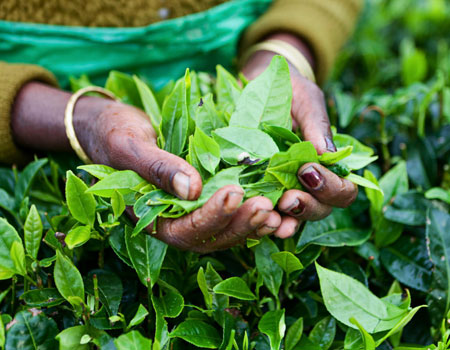
Please Share your Email if you Wish to Receive the Golden Tips & Tales Newsletter from History of Ceylon Tea Website

The Asian Tea Alliance (ATA) announced in April 2019 in a memorandum of understanding (MOU), an agreement to act rather than a formal plan, between the main industry and policy organizations in five tea-growing countries: Indian Tea Association, China Tea Marketing Association, Indonesian Tea Marketing Association, Sri Lanka Tea Board and Japan Tea Association. It is representative of the trend towards co-opetition as critical to the future of tea growing in an era of climate change, global overcapacity, disappearing operating profit margins, and labor and social turmoil.
Co-opetition can be summarized as “Collaborate in the morning so you can compete in the afternoon.” It’s very different from a cartel—cooperate so we can stop outsiders competing—or a NAFTA-like trade treaty. It is a formal group publicly committed to working together on a specific area where the collaborative gains outweigh individual advantage.
The BBC summarizes the issue as “Tea industry’s future rests on corporate collaboration” and points to how the largest “tea companies are laying to one side their competitive instincts to protect the long-term future of their business” through transparency and authentication, Fair Trade, Rainforest-UTZ, the Ethical Tea Partnership, and supplier identification. ATA works from the other end of the value chain.
The viability and impact of ATA is unclear. It is an MOU only. It may drift, lack financial and organizational resources or not be a priority for national policy makers and industry leaders. But it is part of a growing trend away from “Go it alone” to “We can only work on this together, “This” is the future of the tea industry. And ATA is the largest force in trading.
Here are rankings of the top ten countries in tea Production (millions of metric tons), Exports and Imports. ATA nations are highlighted. They absolutely dominate production and exports and, correspondingly, are minnows in imports.
Tea Exports and Imports(ATA members shaded)
| Production | Exports | Imports | ||||
|---|---|---|---|---|---|---|
| 1 | China | 2.5* | China | 1.8 | Pakistan | 0.6 |
| 2 | India | 1.3 | Kenya | 1.1 | Russia | 0.5 |
| 3 | Kenya | 0.4 | India | 0.8 | USA | 0.5 |
| 4 | Sri Lanka | 0.4 | Sri Lanka | 0.7 | UK | 0.4 |
| 5 | Vietnam | 0.3 | Germany | 0.3 | Egypt | 0.3 |
| 6 | Turkey | 0.2 | Poland | 0.2 | Germany | 0.2 |
| 7 | Indonesia | 0.1 | Japan | 0.1 | Morocco | 0.2 |
| 8 | Myanmarr | 0.1 | UK | 0.1 | Japan | 0.2 |
| 9 | Iran | 0.1 | USA | 0.1 | Vietnam | 0.2 |
| 10 | Bangladesh | 0.1 | Vietnam | 0.1 | France | 0.2 |
*Reported in millions of metric tons
For the ATA, the agenda is expanding both the size and quality of the trade space and mobilizing to move forward on sustainable development as a block. The specific targets are:
ATA emerged from a series of such interactions, with a pivotal MOU in December 2018 that focused on global market promotion of China and India as premium producers.
Prices drop with oversupply and costs increase with underproduction. The future of tea rests with premiumization, a message the ATA aims to make its brand.
Source: https://worldteanews.com/tea-industry-news-and-features/the-asian-tea-alliance-the-new-co-opetition
Comments
(In keeping with the objectives of this website, all COMMENTS must be made in the spirit of contributing to the history of this estate, planter or person i.e. names, dates & anecdotes. Critical evaluations or adverse comments of any sort are not acceptable and will be deleted without notice – read full Comments Policy here)